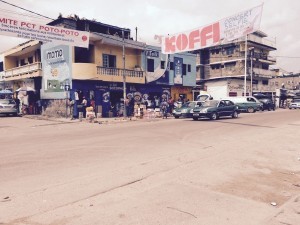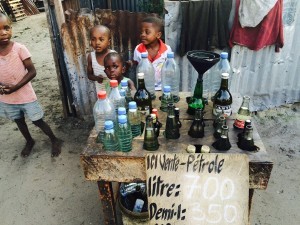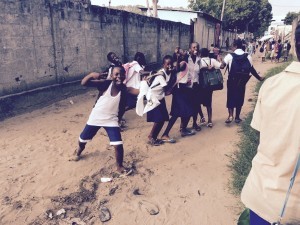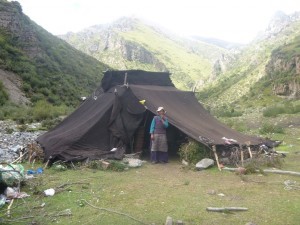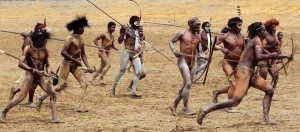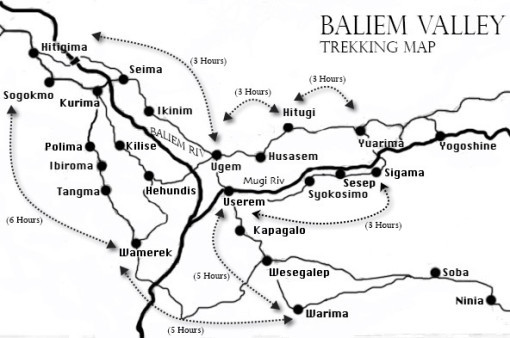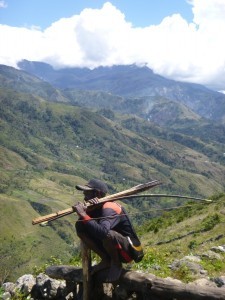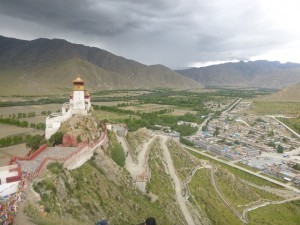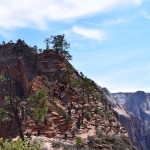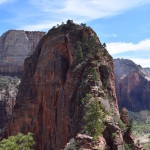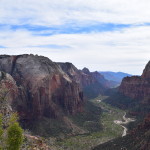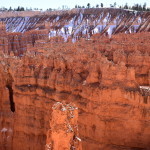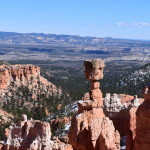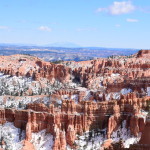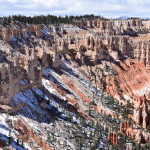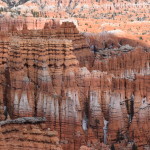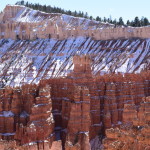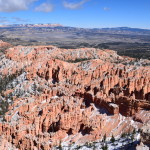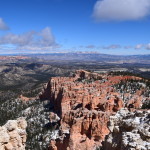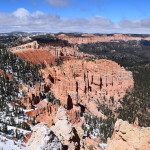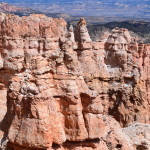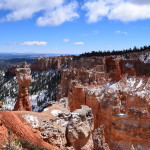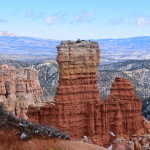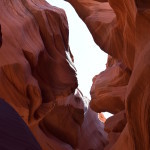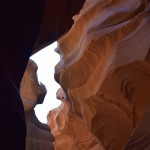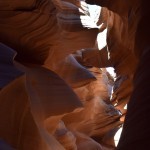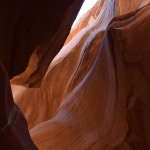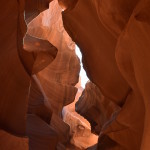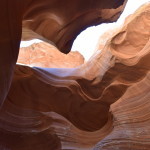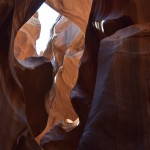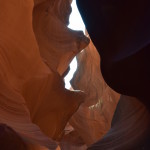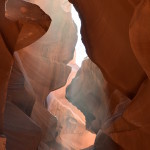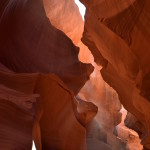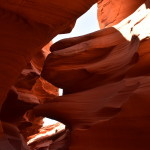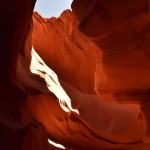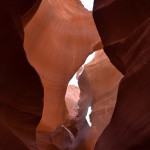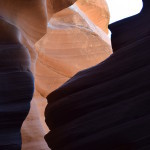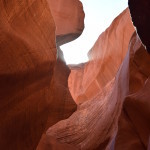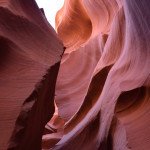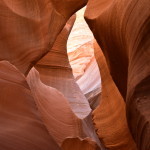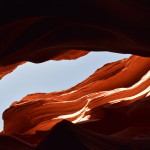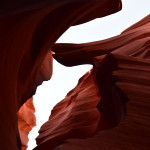Daniel Royse's Blog, page 6
January 8, 2017
Backpacking “Little” Congo on a Budget (Republic of Congo)
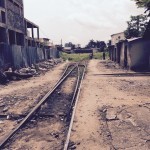 The Republic of Congo (Congo Brazzaville), like all of Central Africa is not high on most travelers’ bucket lists. The area has a reputation for being dangerous, corrupt and expensive. On top of that, there is little in the way of traditional tourist attractions. For all these reasons, most people steer clear of the region all together. But on the other hand, isn’t that what makes it interesting? We thought so.
The Republic of Congo (Congo Brazzaville), like all of Central Africa is not high on most travelers’ bucket lists. The area has a reputation for being dangerous, corrupt and expensive. On top of that, there is little in the way of traditional tourist attractions. For all these reasons, most people steer clear of the region all together. But on the other hand, isn’t that what makes it interesting? We thought so.
THE PLAN:
Congo Brazzaville tends to be prohibitively expensive, so we wanted to see if we could travel the country within a typical backpacker budget. We started our trip with little more than a general idea of where we wanted go and a goal to stick to an itinerary that any backpacker could afford.
This is a brief recount of two, non-French speaking white males as they fumble their way across The Republic of the Congo.
Our first obstacle presented itself on arrival in Brazzaville prior to even getting out of the airport. According to our immigration officer, we didn’t have the correct “Letter of Invitation” to visit the country, and this particular gentleman wanted $300 USD each as a substitute. After a 45-minute argument, we negotiated him down to $250 USD for the both of us. Not what you would call a “win”, but it was the best we could do.
Here’s a tip for anyone flying into Brazzaville, make sure you have some kind of Letter of Invitation. You can probably just create one yourself, as they most likely wont know the difference. It’s essentially one less reason for them to extract cash from you.
EXPLORING BRAZZAVILLE:
As far as large African cities go, Brazzaville is actually quite relaxing but there’s not much to keep you there for more than a few days. Instead our plan was to head north into the remote jungle villages of northern Congo, and maybe even further into the areas near the Nouabale-Ndoki National Park if time and money permitted.
 After one night in Brazzaville we made our way to the city bus station to catch a ride somewhere north. Unfortunately for us buses only travel north on certain days, so we ended up staying on the outskirts of Brazzaville for another day while inadvertently meeting a group of young guys who thought we looked too out of place to navigate the city on our own. As a result, we ended up touring a part of Brazzaville that we would normally have never seen. We walked through the dirt roads alongside stone and sheet-metal homes. We met teachers, students and shop owners along the way, and in the end got a better understanding for the people who make up the countries’ capital.
After one night in Brazzaville we made our way to the city bus station to catch a ride somewhere north. Unfortunately for us buses only travel north on certain days, so we ended up staying on the outskirts of Brazzaville for another day while inadvertently meeting a group of young guys who thought we looked too out of place to navigate the city on our own. As a result, we ended up touring a part of Brazzaville that we would normally have never seen. We walked through the dirt roads alongside stone and sheet-metal homes. We met teachers, students and shop owners along the way, and in the end got a better understanding for the people who make up the countries’ capital.
Over the course of the next day we learned as much as we could about Congolese culture and the current state of affairs in the country. It was interesting to learn that while our goal was to get out and see their remote villages, they wanted nothing to do with that side of their country. They were more proud of their newly built football stadium than anything resembling something traditional. Their focus was on studying, hip hop music, how to meet girls and get a good paying job, all things that felt very familiar. But more than anything, they were happiest about the stability their country now had.
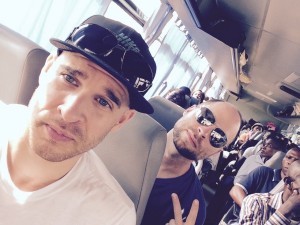 AIR-CON BUS INTO THE HEART OF DARKNESS:
AIR-CON BUS INTO THE HEART OF DARKNESS:
The next morning we boarded a bus heading to the small jungle village of Makua, which is one of the first towns in the Congo jungle as you head north. It’s a small non-descript village consisting of a nice hotel, a bar and a couple of restaurants that serve local Congolese dishes of cassava and chicken. Bush meat, such as monkey is also on the menu but we decided to skip it and any food born diseases that it might carry.
Leaving Makua, the road continues past dense swaths of immense Congolese jungle lined with little villages made of mud and stone until it hits the region’s major hub of Quesso. Quesso is the typical jumping off point to the Nouabale-Ndoki National Park where you can view wild elephants and gorillas, although most people who make it here simple fly in with a tour group and avoid the rest of the Congo.
Traveling overland this far was not without obstacles. As we made our way north over the course of about four days, we had to pass through about ten military checkpoints with approximately half of them requesting payment for passage. This unfortunately is the reality for the citizens of the Congo, a military that is rarely paid by its government and has to resort to extortion as a means of survival. Two out-of-place foreigners make the best and easiest targets.
The town of Quesso is a typical African town situated in the middle of the Congolese jungle. Up until recently it had been closed off from the rest of the country due to its main road being destroyed in the civil war. It was only **** years ago that the road was repaired and buses now frequently make the overland trip. From Quesso it’s theoretically possible to rent a vehicle to visit outlaying Pygmy villages. We attempted this, but were stopped by Congolese military and asked to pay a “fee” for crossing checkpoints. Discouraged by the number of “fees” we were dishing out, we decided to cut our losses and spend more time in Quesso drinking beer and eating cassava.
From Quesso, the next obvious stop is the Nouabale-Ndoki National Park or its nearby areas. The park itself was too expensive for us to even consider entering (Approx. $10,000 USD per week). However we knew that wild elephants could be viewed by simply staying in the adjacent village of Bomassa. So that was our next plan of action.
From the Sangha river that runs east of Quesso you can hire dugout canoes that will travel the distance to the village of Bomassa. River travel is currently the only way to access the village. After some hard and disappointing negotiations, we reached the conclusion that the boatmen would not make the journey for less that $200 USD each way. With this extraordinarily high price being well out of our budget we declined and abandoned any hope of seeing the wild elephants.
With all our Congolese plans unrealized and our time running out, we made the long journey back to Brazzaville to meet up with our friends from the city. We spent the next few days exploring the rarely visited villages around the periphery of the capital. In the end, despite having much of our plans killed by the logistics of traveling in the Congo, we ended up leaving the country having created some great friendships and gaining a good understanding of the struggle that people live with everyday.
Our trip to The Congo turned out to be interesting and eye opening for reasons we never expected. It wasn’t about the sites or animals we saw, but more about the connections we made and the experience of navigating our way around a country that is only now recovering from a brutal civil war that tore it apart for so many years.
For those interested in traveling to The Republic of Congo on a budget, its best to be open to any situation that presents itself because nothing here is predictable. But if you have enough time and determination, you can see a part of Africa that few travelers reach and you’ll end up leaving knowing that you’ve experienced a corner of the world rarely seen by outsiders.
Tibet’s 2nd Invasion
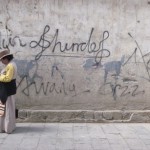 The Potala Palace, known the world over as an icon of Tibetan Buddhism, towered over the city of Lhasa casting a literal shadow on the hustle and bustle below. Although from our vantage point, the profound symbolism of the building was lost amidst the chaos of modernity that swarmed below it. As we stood in awe of the structure that inspired us to make the trip to Tibet in the first place, we couldn’t help but be a little perplexed by the situation staring back up at it.
The Potala Palace, known the world over as an icon of Tibetan Buddhism, towered over the city of Lhasa casting a literal shadow on the hustle and bustle below. Although from our vantage point, the profound symbolism of the building was lost amidst the chaos of modernity that swarmed below it. As we stood in awe of the structure that inspired us to make the trip to Tibet in the first place, we couldn’t help but be a little perplexed by the situation staring back up at it.
Like a rock concert full of screaming fans thrusting their lighters in the air, we stood in a sea of smart phones and selfie-sticks all competing for the best picture in front of the great Potala. Tour groups draped in the latest hiking gear, teenage girls trying desperately to fit their entire entourage within the frame of a smartphone and even professional wedding photography in traditional Tibetan attire…being worn by non-Tibetans. What had become of this icon of Buddhist spirituality? Was our image of the Potala really that misaligned with its reality?
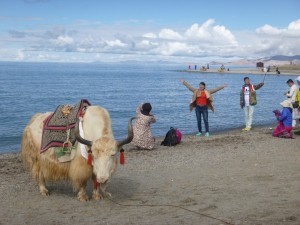 SOMETHING, SOMEWHERE WENT HORRIBLY WRONG:
SOMETHING, SOMEWHERE WENT HORRIBLY WRONG:
Nearly seventy years ago Tibet lost its political sovereignty at the hands of the Peoples Republic of China, in what was one of the century’s most brutal military occupations. And since then, Tibet has undergone a systematic cultural infiltration by Han Chinese immigrants, backed by the Chinese government.
This influx has lead to the gradual modernization of Tibet (Roads, schools and industry) but at the cost of their cultural identity. These days any visit to Tibet is not without the shocking realization that much of the country is essentially a Chinatown with their signature grey high-rises, wide boulevards and tacky storefronts, surrounding what is typically only a small Tibetan Quarter.
Modern day Tibet is without a doubt and eye-opening experience, but maybe not in the way you would expect. Foreign tourists are required to navigate a lengthy process of permits, government approved guides, vehicles and restricted areas. All this while the Chinese tourists and immigrants are given a free pass.
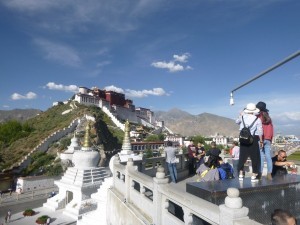 To add fuel to the fire, the new Chinese middle class has developed a taste for travel. So with a weak currency, a limited command of the English language and a limit to how much Yuan they can take out of the country per year, many Chinese prefer to travel domestically rather than abroad. All these reasons and more contribute to the mass Chinese tourism that has now become a hallmark to China.
To add fuel to the fire, the new Chinese middle class has developed a taste for travel. So with a weak currency, a limited command of the English language and a limit to how much Yuan they can take out of the country per year, many Chinese prefer to travel domestically rather than abroad. All these reasons and more contribute to the mass Chinese tourism that has now become a hallmark to China.
ALL IS NOT LOST!
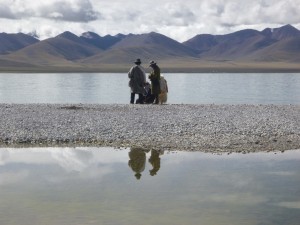 Despite continued oppression from the Chinese government and the influx of Chinese tourists, Tibetans have managed to keep their traditions intact and very much alive. And for those travelers willing to work for it, there are still many treks, temples, villages, valleys and monasteries that are truly and utterly Tibetan. It is still possible to visit traditional nomads, hike trough remote valleys and find yourself completely alone (aside from your mandatory guide) in an isolated Tibetan monastery. Yes, all these things still exist in modern day Tibet and since most Chinese tourists stick to well trodden paths and most foreign tourists are scared off by all the permits and restrictions, they can be all yours….with a little research and planning of course!
Despite continued oppression from the Chinese government and the influx of Chinese tourists, Tibetans have managed to keep their traditions intact and very much alive. And for those travelers willing to work for it, there are still many treks, temples, villages, valleys and monasteries that are truly and utterly Tibetan. It is still possible to visit traditional nomads, hike trough remote valleys and find yourself completely alone (aside from your mandatory guide) in an isolated Tibetan monastery. Yes, all these things still exist in modern day Tibet and since most Chinese tourists stick to well trodden paths and most foreign tourists are scared off by all the permits and restrictions, they can be all yours….with a little research and planning of course!
TIPS AND TRICKS:
1. Keep your expectations realistic! The Han Chinese are a real presence in Tibet, so don’t expect to find your Shangri-La right out of the airport.
2. Work with a tour company to customize your own itinerary prior to leaving. Yes, this part will take some research.
3. Get off the beaten track. Go to places that aren’t “Must Sees” as they will be filled with smartphones and selfie-sticks.
4. Remember, Tibet is expensive so plan accordingly. Although your (mandatory) tour company should have most costs covered in their price.
Chinese youth have taken a serious liking to Tibet, and these days Tibet is seen as an inspiring and exotic location within their own borders. It’s safe to say that the young Chinese of today have different attitudes about Tibet compared with previous generations. So as Tibetan youths grow up and assume positions of power within their government we can only hope that they carry forward their more “enlightened” views of the Tibetan Plateau and give back to Tibet its much deserved autonomy and civil liberties.
January 7, 2017
Amazon Publishing helps Honor a Grandfather’s Legacy
 When traditional publishing was out-of-reach for a new author, Amazon On-Demand printing helped tell a story that needed to be told.
When traditional publishing was out-of-reach for a new author, Amazon On-Demand printing helped tell a story that needed to be told.
After months of being denied a deal by the traditional publishing houses, new author Daniel Royse is now enjoying the fruits of his labors.
Thanks to Amazon On-Demand printing, Daniel was able to leverage social media, content strategy and word-of-mouth advertising to publish and promote a unique, niche-market novel.
Growing up, Daniel had always heard the crazy and outlandish stories that people would tell about his late grandfather. And when he discovered that his father had written a series of unpublished short stories about the infamous relative, he felt compelled to share it.
 His novel, The Watermelon King combines two seemingly unrelated stories that run parallel to each other throughout the duration of the book. One follows the true-life story of Daniel’s grandfather as he creatively tries to support his family during the mid 20th century in rural North Dakota. While the other is a fictional narrative based on true events about two brothers backpacking across East Africa. In the end, the two stories work together to communicate a message about the importance of family and living life to its fullest.
His novel, The Watermelon King combines two seemingly unrelated stories that run parallel to each other throughout the duration of the book. One follows the true-life story of Daniel’s grandfather as he creatively tries to support his family during the mid 20th century in rural North Dakota. While the other is a fictional narrative based on true events about two brothers backpacking across East Africa. In the end, the two stories work together to communicate a message about the importance of family and living life to its fullest.
This unlikely combination of narratives would normally be out of the comfort zone of most traditional publishers and therefore would have probably never seen the light of day. But thanks to Amazon On-Demand printing and Kindle publishing, this book was able to be written, published and shared with an audience willing to take a chance on a new author with an affinity for obscure story-telling.
September 11, 2016
Papua: Map and Guide to Independent Trekking in the Baliem Valley
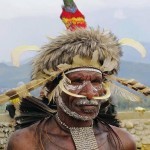 Let’s start with the basics. The island of New Guinea is the 2nd largest island in the world and is currently divided between two countries, Papua New Guinea to the east and Indonesia to the west. Most of the islands’ attention goes to the Papua New Guinea side, however here we are only talking about the Indonesian side.
Let’s start with the basics. The island of New Guinea is the 2nd largest island in the world and is currently divided between two countries, Papua New Guinea to the east and Indonesia to the west. Most of the islands’ attention goes to the Papua New Guinea side, however here we are only talking about the Indonesian side.
The Indonesian side of the island of New Guinea is again divided into two provinces, West Papua and Papua. Although over the years they have gone through many names (formerly known as Irian Jaya). In this article we are only focusing on Papua and the Baliem Valley, as this is where the bulk of the trekking is.
HOW DO I GET TO BALIEM VALLEY?
The standard way goes like this. Once you enter Indonesia (Usually through Jakarta or Bali) you will fly to Jayapura, the capital of Papua. From Jayapura you can take a one-hour flight to Wamena. Wamena is where all your Baliem Valley treks start and finish.
WHAT TRIBES ARE IN THE BALIEM VALLEY?
The Baliem Valley is home to the Dani tribe. If you continue west you will reach the Lani tribes, and if you continue east you will reach the Yali tribes and (eventually) the Mek tribes. South of Baliem Valley you will find the Korowai, Kombai and Asmat.
WHERE IS THE BEST TREKKING IN THE BALIEM VALLEY?
Three major roads traverse the Baliem Valley. From Wamena they go southeast, west and north.
The best trekking is where the southeast bound road ends. The road ends in Kurima and trekking begins in either Kurima or Sogokmo. Once the road ends the hillsides get steep and the culture gets more traditional. From here the only way in or out is by walking.
It is often said that villages do NOT get more traditional the further in you trek. This is because airstrips are scattered all around the central highlands of Papua. As a result you can go as far or as close as you like and still get a good experience.
The road west goes all the way into Lani country. It is often said that it is less scenic and less traditional. Therefore fewer tourists have a reason to go there. This might be a good way to get “off the track”, however expect the culture to be a bit more modern (houses, cloths, lifestyle).
The road north goes past a few important Baliem Valley sites, the most important of them being the famous 200-year-old Mummy. There are some nice trails leading out of villages along the main road.
FOOD AND WATER:
Unfortunately Papuan food leaves a lot to be desired. In the traditional Dani areas you will typically only find sweet potatoes and packaged noodles. So it’s a good idea to bring some food with you. I recommend bringing noodles, packaged cookies, and instant coffee.
You can get drinking water from nearby streams, although you probably will want to purify this in some way. Also, you can ask for boiled water in many villages, but this is never fast or plentiful enough.
SLEEPING:
Most villages have a guesthouse of some kind that you can stay in and many of them have some sort of pad you can sleep on. Worst-case scenario, they give you just a hard wooden floor. If they are not set up to host, it’s likely they will find room for you somewhere anyway.
CAN I GO TREKKING INDEPENDENTLY (WITHOUT A GUIDE)?
Yes, but you would inevitably get lost and end up wasting a lot of time and energy walking aimlessly around the jungle on tiny hard-to-see paths. That does not mean that I am suggesting you join a tour group and get chauffeured to each village on their list, because there is a better way.
Definitely hiring a guide in Wamena or online will make your trek move more smoothly. And if you don’t feel like putting up with the headaches of independent travel, then this is the way to go.
Although, if you’d like to trek in Baliem Valley independently, this is what I suggest.
Stalk up on candy, food, cigarettes and small bills in Wamena
Take a bemo, ojek or hitch to Kurima or Sogokmo
From either Kurima or Sogokmo begin your trek (without a guide)
Ask for directions every chance you get
Hire a local guide (or a Porter) in each village for your trek to the next village. This will save you tons of money. Sometimes you can even get a village kid to take you for some candy.
Download an offline Indonesian language translation app, to help with dealing with prices
Download Maps.Me with the offline Indonesia map. Its not complete but hey, nothing for this area is.
THINGS TO BRING:
Sleeping Bag (not a pad, its just extra weight and most places have them)
Good Hiking Shoes
Mosquito Net
Rain Poncho
Flashlight/Torch
Water Purification System
Food: Packaged Noodles, Candy, Packaged Cookies, Cigarettes, Coffee
Hat and Sunscreen
Walking Stick: You can find this along the way
NEED A MAP?
Here’s a semi detailed map of the most popular trekking area in the Baliem Valley and Central Highlands. Feel free to print this out and take it with you, but you shouldnt use this as your only guide to the area. It would also be a good idea to download the free offline maps-app, MAPS.ME. This can track your progress along the trek by using your phone’s GPS while your data is turned off.
PAPUA TRIBES:
Within Papua you can visit the following tribal areas. Although in this article we are only focusing on the Dani Tribe, as they inhabit the Baliem Valley area.
Dani Tribe:
Yali Tribe:
Mek Tribe:
Lani Tribe:
Korowai and Kombai Tribes:
Asmat Tribe:
Mambaramo Tribes:
IS PAPUA SAFE?
Yes, usually Papua is safe to travel to. But as always check current conditions as there is sometimes fighting between the indigenous people and their Indonesian overlords. For example when we were there fighting broke out in Kurima, postponing our trek and altering our course. It happens.
WHAT IS A SURAT JALAN AND HOW DO I GET ONE?
Surat Jalan is an Indonesian travel permit issued for travel around Papua. It is free and usually takes an hour to get. You should be able to produce two passport sized headshots, a passport, and a photo copy of your passport and Indonesian Visa just in case they are unable to scan your passport while you are there.
The Surat Jalan is then presented to each police station in each village that you stay in. This may be a way for them to track you down when you go out trekking by yourself, slip on a rock and break your leg.
DO I NEED TO SPEAK INDONESIAN?
No, however traveling around the Baliem Valley without speaking Indonesian is difficult…even in Wamena or Jayapura. For many of the people here, their first language is their local tribal language and their second language is Indonesian. So speaking English would mean that they are now on their third language. It’s not very common.
However, you can usually get around by simply saying the names of towns and villages as well as a few names of food items that you like. For me it was comparable to West Africa or China in terms of language difficulty.
Sure, we’d all love to be the first pasty white face that an isolated village of godless savages has ever seen but I’m sorry to say that those days are over…yes, even for the lost island of New Guinea. So is it touristy? Well, by most standards…. no. There are no luxury hotels, ticket takers or entry fees. However you will hardly be the first outsider to step foot there.
To give you an example on actual numbers, the village of Syosimo, which is on many tour routes, saw about 50 tourists in 2015 (based on the village ledger). The vast majority of those tourists were in the months of February, July and August.
You will notice that there are certain villages that are on the usual tour group routes, and they act accordingly selling souvenir, asking for “gifts”, charging inflated prices and even putting on a show or two. However you will also notice that if you can break away from the normal route you will find villages that are much more friendly and authentic. Although this is not always so easy. Tourists complaining that Papua is too touristy probably did not get away from the standard tourist route.
So yes, anywhere that is interesting and accessible other tourists have been. This includes all of the tribes mentioned above.
ARE THE TRIBES IN PAPUA STILL TRADITIONAL?
The trick is to adjust your expectations. No, you will not find lost tribes of headhunting cannibals. BUT aside from the loss of a few traditions (head-hunting, cannibalism, finger-cutting) and the adoption of western clothing, most villages still live a very simple and traditional lifestyle. For example, many still live in thatched huts, eat primarily sweet potatoes, speak their native tongue and are mostly self sufficient.
A general rule applies. Where there is transportation links (roads and runways), there will be change and a loss of traditional culture. In Papua, like anywhere else the traditional areas are where there are no roads. To put it another way, you need to trek there.
SUMMARY:
The hardest part about trekking in the Baliem Valley (or anywhere in Papua) independently is probably the planning. Arriving in Wamena and realizing there is very little information and even fewer English speakers can make it hard. I’m not aware of any travel agencies in Wamena and most hotels don’t speak much English. Every map you will find is slightly different and incomplete.
The best resource in town is probably still the Internet cafe (Papua.com). Here you can get a printed map of the entire Baliem Valley and maybe even some information on the area from the owner. Do NOT use this map as your only map. Download the offline Indonesia map for Maps.Me and take a copy of the map provided here.
Enjoy!
September 8, 2016
Tibet: Price List For Tibetan Monasteries Around Lhasa
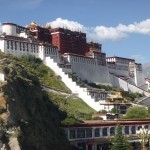 If you’re traveling to Tibet then most likely you’ll be going on an organized tour. But if your tour company doesn’t include all your monastery fees in the cost of the tour, then you’ll want to take a look at the price list below. Unfortunately Tibet can be a very expensive country for foreigners, so if you get stuck paying for your monastery fees outside of the price of your tour, you could be in for a real shock…because these things can add up!
If you’re traveling to Tibet then most likely you’ll be going on an organized tour. But if your tour company doesn’t include all your monastery fees in the cost of the tour, then you’ll want to take a look at the price list below. Unfortunately Tibet can be a very expensive country for foreigners, so if you get stuck paying for your monastery fees outside of the price of your tour, you could be in for a real shock…because these things can add up!
The prices here are reflected in RMB (Yuan), which is the currency used in Tibet. These prices were recorded in 2016. So if you’re reading this after that, there could be slight increases. The locations listed below are some of the most popular monasteries around Lhasa, so you’ll most likely be hitting a few of them on your visit to Tibet.
Potola Palace: 200 RMB
Jokhand Temple: 85 RMB
Ramoche Temple: 20 RMB
Lhasa Tsamkhung Nunnery: 40 RMB
Palhalupuk Temple: 20 RMB
Tsepek Lhakhang: Free
Drepung Monastery: 60 RMB
Nechung Monastery: Free
Sera Monastery: 50 RMB
Ganden Monastery: 50 RMB
Yamalung Nunnery: Free
Samye Monastery: 40 RMB
Chimpuk Nunnery: Free
Yumbulagang Palace: Free
Thang Po Che Monastery: 10 RMB
Tombs Of Tibetan Kings: 30 RMB
Namsto Lake: 120 RMB
June 7, 2016
Angels Landing, Zion National Park: Free High Resolution Images
Lower Antelope Canyon, Arizona: Free High Resolution Images
December 26, 2015
How To Backpack in Congo-Brazzaville (Republic of Congo)
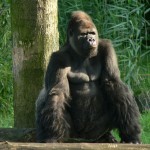 When most people hear the name “Congo” they instinctively envision brutal civil wars, dense and impassable jungle and miles and miles of militia-controlled roadways. While these aspects of the Congos are very much a reality, there are still some options for independent travel throughout the region.
When most people hear the name “Congo” they instinctively envision brutal civil wars, dense and impassable jungle and miles and miles of militia-controlled roadways. While these aspects of the Congos are very much a reality, there are still some options for independent travel throughout the region.
In this article we’ll focus on The Republic of Congo otherwise known as Congo-Brazzaville, the slightly less intimating of the two countries (Republic of Congo and The Democratic Republic of Congo).
So to answer the question that is no doubt on your mind if you’ve gotten this far in the article….Can I backpack across the Republic of Congo? Simply put…Yes! And here is the basic information that you’ll need to do it.
BRAZZAVILLE
As the countries capital, second largest city and most likely your first entry point into the country, Brazzaville is a better introduction to Africa than most other large cities on the continent. Just across the Congo River from Kinshasa, Brazzaville is a more chilled out version of its wild and crazy neighbor to the east. In fact, Brazzaville and Kinshasa are the world’s two closest capital cities.
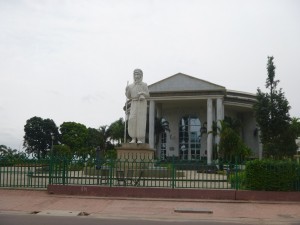 Though Brazzaville may not be the most happening place in the world, you can still enjoy its chilled out vibe for a few days in between the Congo’s more “challenging” places. It has a few decent restaurants and bars located in the downtown area, a boat dock for trips along and across the Congo River, and a few points of interest for site seeing. In no particular order, here are the highlights:
Though Brazzaville may not be the most happening place in the world, you can still enjoy its chilled out vibe for a few days in between the Congo’s more “challenging” places. It has a few decent restaurants and bars located in the downtown area, a boat dock for trips along and across the Congo River, and a few points of interest for site seeing. In no particular order, here are the highlights:
- Statue of Pierre Savorgnan de Brazza
- Congo River Walk Way
- Sainte-Anne Basilica in Poto Poto
- Les Rapids
- Marche Total
THE NORTH
THE PARKS:
Most people who go to Congo-Brazzaville go for the parks, so we’ve listed those first. However due to their price and remote location they are typically out of scope for most backpackers. That being said, if you got time and money they are well worth a visit.
Odzala-Kokoua National Park:
Odzala is probably the hardest to reach out of all the parks in Congo-Brazzaville, but luckily if you’ve got the money they offer one of the most comfortable and high-end safaris in all of Central Africa.
Operator: Wilderness Safaris (Currently this is the only tour operator in the park)
Permits: $130 – $160 Per Person
How to Reach the Park:
- Air: Fly directly into Mboko Airstrip from Brazzaville
- Private 4×4: Drive directly into the park
- Public Transport: The bus goes as far as Etoumbi
- Boat: None
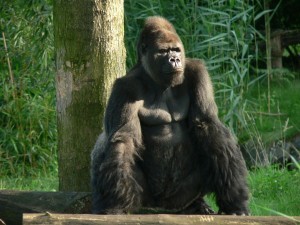 The most common way to visit the park is by flying directly into the airport at the Mboko airstrip inside the park. You can also reach the park via 4×4 assuming roads are in good condition. Alternatively you can take public transit to Etoumbi where you can organize a pick up with Wilderness Safaris.
The most common way to visit the park is by flying directly into the airport at the Mboko airstrip inside the park. You can also reach the park via 4×4 assuming roads are in good condition. Alternatively you can take public transit to Etoumbi where you can organize a pick up with Wilderness Safaris.
Camps:
- Mboko Camp
- Ngaga Camp (6 Rooms)
- Lango Camp (6 Rooms)
The camps in Odzala are high-end luxury camps. They offer comfort and convenience in a very remote part of the country.
Packages:
6 Day Package:
This is the standard way to visit the park and includes all food, transport permits and lodging. It is usually done via flight to Mboko airstrip and costs around $10,000 USD. Typically three nights are first spent at Ngaga Camp and then three nights are spent at Lango Camp.
Custom Packages:
You can also organize shorter or longer tours of the park by contacting Wilderness Safaris directly. They are also all inclusive and cost approximately $1000 per day, per room.
Activities:
- Gorilla Tracking
- Village Visits
- Swamp Hikes
- Boat Trips
- Forest Walks
- Other Wildlife viewing
Parc National Nouabalé-Ndoki:
Nouabale Park is the Congo portion of the Sangha Trinational Park that extends from Congo into CAR and Cameroon. The park has large populations of western lowland gorillas and is famous for its clearings that make viewing wildlife relatively easy. The park was made famous in the 1990’s by National Geographic when they called it the world’s Last Eden.
Operator: Wildlife Conservation Society
Permits: None
How to Reach the Park:
All trips into the park begin with making a reservation with the Wildlife Conservation Society at least a month in advance. Once your booking is confirmed you can arrange your transport method.
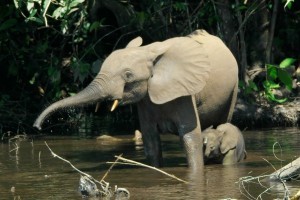 Via Bomassa:
Via Bomassa:
Starting from Ouesso, you will need to hire a taxi (40 Mins) or take a boat (2 to 8 Hours) to the park headquarters in Bomassa. The boat ride costs around $400 (one way), whether it’s from WCS or elsewhere. For an easier trip, there are flights directly into Bomassa. From Bomassa you have two possible options (Mbeli by Jeep/Boat or Mondika by Jeep/Boat/Hike).
Via Pokola:
Alternatively, you can fly directly into Pokola. There is accommodation and tours that frequently start from here. This relieves the need to worry about additional camps or transport methods.
There is no public transport past Quesso and once inside the park, there are few roads so all travel is done by dugout canoe.
Camps:
- Mbeli: Tents
- Bomassa (Near Wali):
- Mondika: None
Viewing Areas:
- Mbeli Bai: Viewing platform for Gorillas, Elephants and Antelopes
- Wali Bai: Viewing platform for Buffalos
- Mondika: Habituated Gorillas
Lake Tele Area:
The main draw here is the near circular lake located in the middle of the reserve. On top of this, there is plenty of wildlife on display including lowland gorillas. On top of that, there is the mysterious dinosaur-like creature that is said to live in the lake…although this has never been proven.
Operator: Wildlife Conservation Society
Permits: None
How to Reach the Park:
Again, start by contacting the Wildlife Conservation Society. To get there, take a flight from Brazzaville to Impfondo. If you want to take the scenic route, the barge will make its way there in about 9 days from Brazzaville to Impfondo. Once in Impfondo, take a jeep to Epena. From there, its all on foot and your tour operator should coordinate the rest. This trek cannot be done independently.
THE ROAD NORTH:
Now that the N2 highway has been rebuilt (Thank You China!), you can take public transit all the way to Ouesso, which had previously been cut off from the rest of Congo for about a decade. The road is paved and currently in good condition. There are two bus operators that make the trip:
- Ocean du Nord (The Better of the Two)
- Seoul Express
Prices for one-way trips range anywhere from $25 to $45 USD depending on which leg you are traveling. You should book your tickets at least one day in advance. The buses are reasonably comfortable with each person getting their own seat. Sometimes you might even get air-con. The journey is also relatively easy and your biggest issue will no doubt end up being the constant bribes/fees to the numerous checkpoints along the road. On the way from Ouesso to Brazzaville, we counted eight checkpoints over the course of the twelve-hour journey.
Owando:
Owando is the halfway point between Brazzaville and Ouesso. It has a hotel and some places to grab food and supplies. Overall there is not much here to keep you busy.
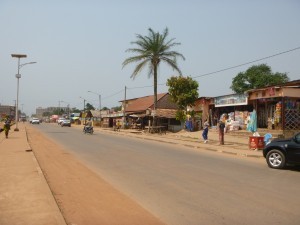 Makoua:
Makoua:Makoua is a better place to catch onward travel. It’s a small sleepy town located right on the equator. It has a few small shops and restaurants (at least one serving Monkey) and a dingy looking park near the edge of town. There’s also an outdoor bar near the central roundabout to grab a drink if you find yourself with nothing to do. The best rooms in town are at the Hotel la Fleur (air-con, TV and clean sheets).
Oyo:
With its wide roads and manicured shrubbery, Oyo will surely stand out. But why on earth would such a remote small town have such nicely shaped bushes? It could be because it is the birthplace of the countries president.
Ouesso:
The final stop on your journey north is Ouesso. This is where the transit and the road run out. It’s a decently sized town with a few places to eat, but expect slow service and menu items not in stock. The best place to stay in town is Nianina Hotel (About $50 USD per night). Ouesso has a large Pygmy presence, so you’ll definitely seem them walking around but in western-style cloths. In fact, they aren’t so easy to spot as they blend in as just shorter people. Also, the term “Pygmy” is a racial slur so try not to throw it around to liberally.
THE WEST
Point Noire:
Point Noire is the countries most modern and cosmopolitan city. In fact, it feels almost like another country. It’s the countries most populated city and over the years has been overhauled by the large expat community that works in offshore oil drilling. Here you’ll find all the trappings of a modern city…international cuisine, bars, nightclubs, hookers and money. It doesn’t look much like the rest of Congo, but at least you won’t get bored.
Dolisie:
Dolisie is Congo-Brazzaville’s third largest city but not much goes on here. It’s more of a transit hub than an actual destination, but if you find yourself here you’ll have amenities and hotels to choose from.
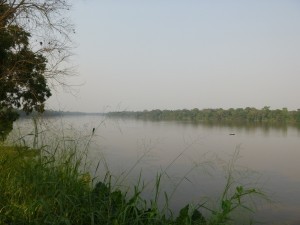 Parc National Conkouati-Douli:
Parc National Conkouati-Douli:Located right on the coast, the Parc National Conkouati-Douli has the widest variety of all the parks in the RoC. The park streatches from the Atlantic ocean, into the savannah, up into the jungle highlands. The biggest draws here are the island dwelling chimpanzees and the sea turtles that nest on the beach.
Operator: Wildlife Conservation Society
Permits: None
How to Reach the Park:
There are trucks that leave Pointe Noire that pass through the park en route to Gabon (about 5 hours). Get off at the village of Conkouati. This is where you can base yourself for visits into the park. There is a lodge nearby.
CONCLUSION:
So that’s it! The Republic of Congo is definitely backpackable. The major downsides include expensive prices for parks, French language and military checkpoints nearly everywhere. If you can handle those, you’ll be just fine.
October 21, 2015
How to CamperVan Across New Zealand
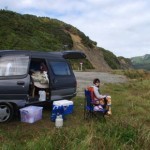 Drive around either island for a bit and you’ll notice that the ecosystems change rather quickly. One minute you may be cruising through sheep paddocks or a temperate rainforest and perhaps just a few kilometers later find yourself heading into some desert landscape that looks to be of another world. My wife and I found this out after we both quit our promising office jobs to go live in New Zealand for a year. We didn’t really know what to expect, but we knew we wanted to go and how to make it happen. It only took us a few days to find our new home on wheels.
Drive around either island for a bit and you’ll notice that the ecosystems change rather quickly. One minute you may be cruising through sheep paddocks or a temperate rainforest and perhaps just a few kilometers later find yourself heading into some desert landscape that looks to be of another world. My wife and I found this out after we both quit our promising office jobs to go live in New Zealand for a year. We didn’t really know what to expect, but we knew we wanted to go and how to make it happen. It only took us a few days to find our new home on wheels.
Truth is, you don’t need to be rich to campervan around New Zealand and it is actually quite affordable. This island nation in the Southwestern Pacific Ocean is home to what are perhaps the world’s most stunning natural landscapes. Living out of a van is the best way to take it all in because it allows you to access all the best places in the most cost-effective way.
It is a simple process to rent a campervan from a number of companies that specialize in this or you can go and buy your own van. If it is not set up as a camper, just pull the back seats out and build a bed frame. No building skills? Go to a site like Gumtree (NZ’s version of Craigslist) or the bulletin boards around town and put up an ad soliciting help. You can also go to a hardware store and may find assistance there.
If you are buying your van, try and begin your search in a sizable city with a decent population and at least a few hostels and campgrounds. Most travelers that buy a campervan will need to sell it once their journey is over and if you look around the bulletin boards and parking lots, you may even find one that has already been modified for life on the road. An important consideration when purchasing any vehicle in New Zealand is that this country requires a Warrant of Fitness, which basically means that it has passed an inspection and is road-worthy. You’ll need to make sure that the vehicle has this certification before you buy it or else you will be responsible for the repairs that will bring your van up to spec and allow you to transfer the title into your name.
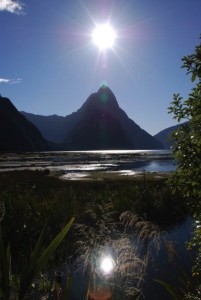 Once you’ve found the right vehicle you only need to decide which direction to go. Depending on the season and your individual priorities, it is a good idea to identify what you want out of the trip. If you desire more natural beauty, you may want to hike deep into the forest on the many multi-day treks that the Department of Conservation has created. Trekking is a popular activity that allows you to immerse yourself in the temperate rainforests that are found around the North Island and cover much of the South. To make things a bit more comfortable, a network of around 1,000 huts throughout these trails lets you sleep a little easier along the way. These are basic sleeping facilities that protect weary travelers from the elements by putting a roof over their head, a pad to sleep on and a sink to wash in. This hut system creates a very unique backpacking experience that allows for socializing with your bunk-mates and staying in unforgettable little cabins. If privacy is your thing, just bring a tent!
Once you’ve found the right vehicle you only need to decide which direction to go. Depending on the season and your individual priorities, it is a good idea to identify what you want out of the trip. If you desire more natural beauty, you may want to hike deep into the forest on the many multi-day treks that the Department of Conservation has created. Trekking is a popular activity that allows you to immerse yourself in the temperate rainforests that are found around the North Island and cover much of the South. To make things a bit more comfortable, a network of around 1,000 huts throughout these trails lets you sleep a little easier along the way. These are basic sleeping facilities that protect weary travelers from the elements by putting a roof over their head, a pad to sleep on and a sink to wash in. This hut system creates a very unique backpacking experience that allows for socializing with your bunk-mates and staying in unforgettable little cabins. If privacy is your thing, just bring a tent!
If money is on your mind, then hop on the harvest trail and pick fruits and veggies along the way or find a tourist area that has a high turnover of travelers and look for work there. Many farms, orchards, and lodging will offer their employees some facilities to utilize while they stay in a tent. Some will even provide a dormitory or private rooms that offered in exchange for work. This also creates a social environment where you work and live with other travelers, while sharing memories and advice.
After buying our van, my wife and I headed straight to the South Island because it is so uninhabited. Our priority was to get away from it all and this finally happened when we got to the West Coast. It was like arriving in a natural Wonderland and we immediately fell in love with the fresh ruggedness of the coastal terrain and endless forest. There’s a saying in the USA that the West Coast is the best coast and we found the same to be true down under. This part of NZ is a magical land of dense rainforest, desolate coastlines, and amazing flora/fauna. There aren’t a lot of people around here, which offers all sorts of opportunities to camp for free right next to the ocean or along a river down some random gravel road.
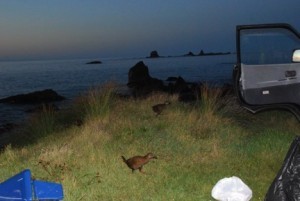 The best part of campervanning is the ultimate freedom that you give yourself. You can do whatever you want because your home is always right there. Your commitment is to yourself and not a lease. And while you are there having the adventure of a lifetime, don’t forget to look up. The night sky in New Zealand is the most stunning that I have ever seen and living out of a van had us admiring it every night. Most evenings we would find a private place to park that was off the beaten path and would set up our chairs and pull out the grill a couple hours before sunset. After having a proper feed, we would lie back and enjoy our front row tickets to the moon.
The best part of campervanning is the ultimate freedom that you give yourself. You can do whatever you want because your home is always right there. Your commitment is to yourself and not a lease. And while you are there having the adventure of a lifetime, don’t forget to look up. The night sky in New Zealand is the most stunning that I have ever seen and living out of a van had us admiring it every night. Most evenings we would find a private place to park that was off the beaten path and would set up our chairs and pull out the grill a couple hours before sunset. After having a proper feed, we would lie back and enjoy our front row tickets to the moon.
- By Charles Eltonga

